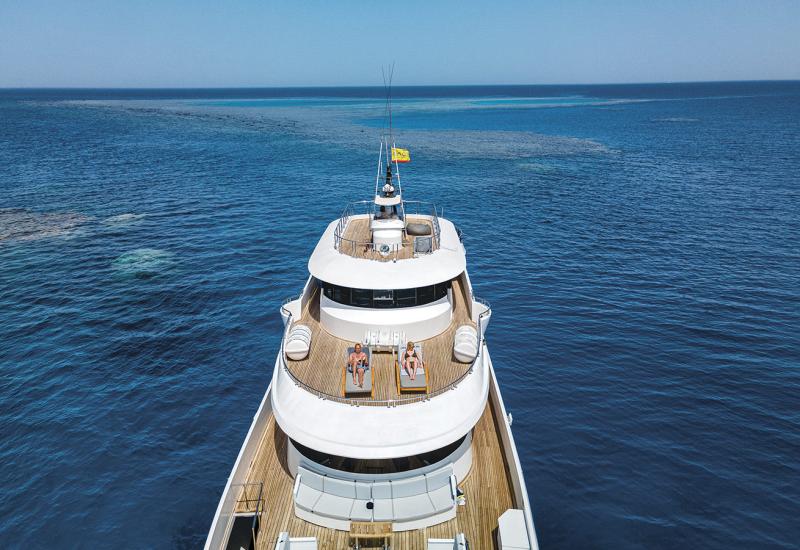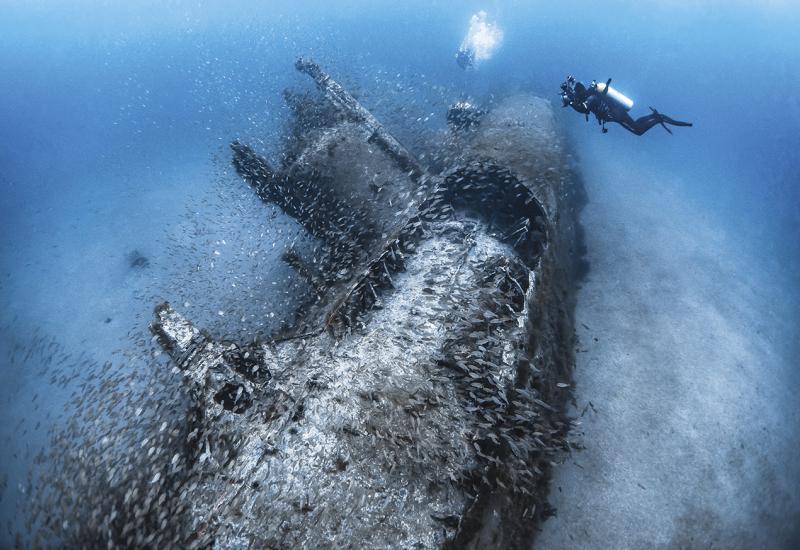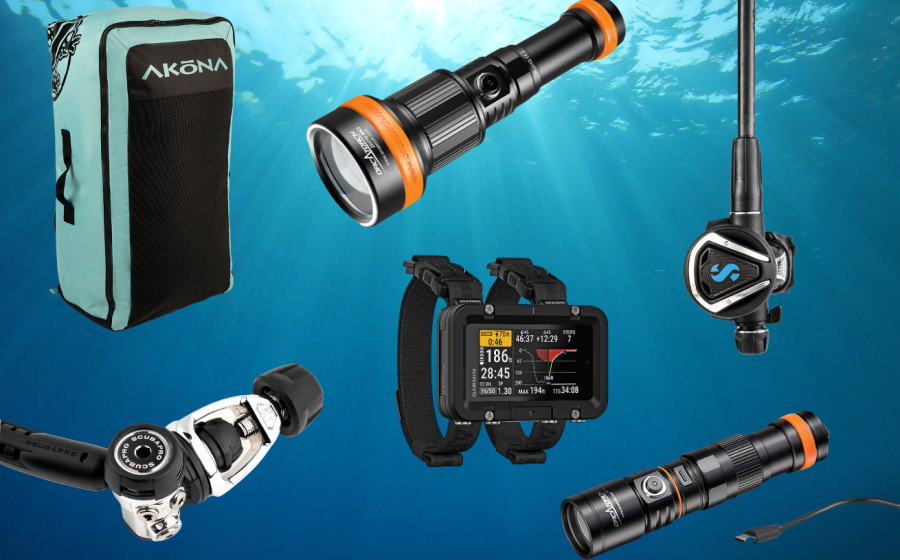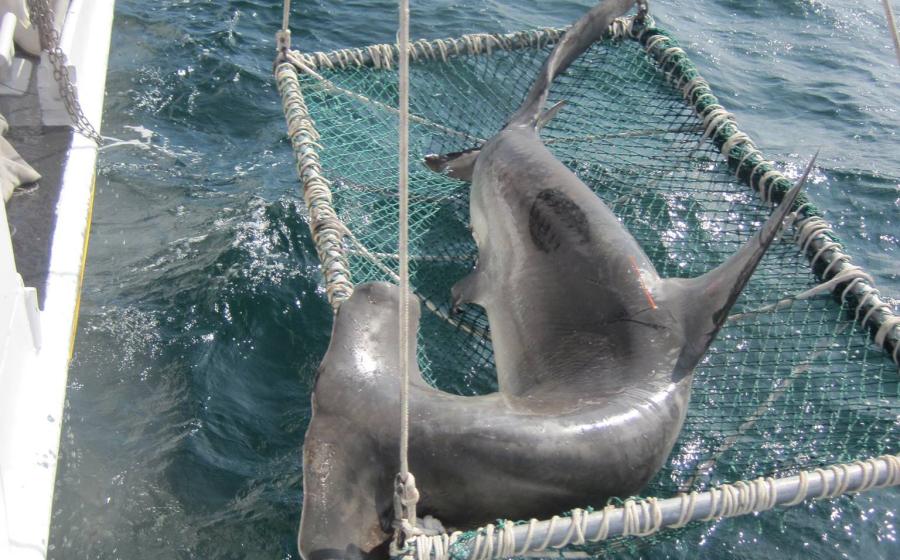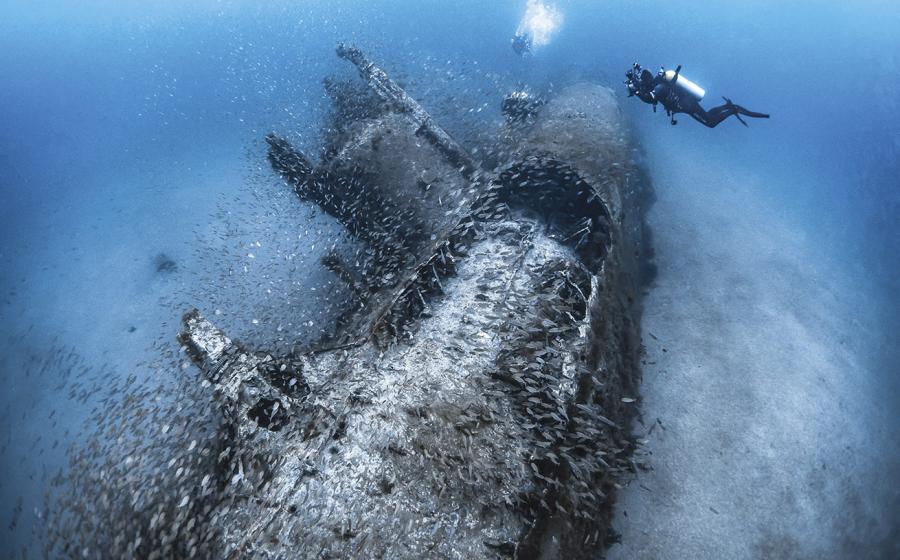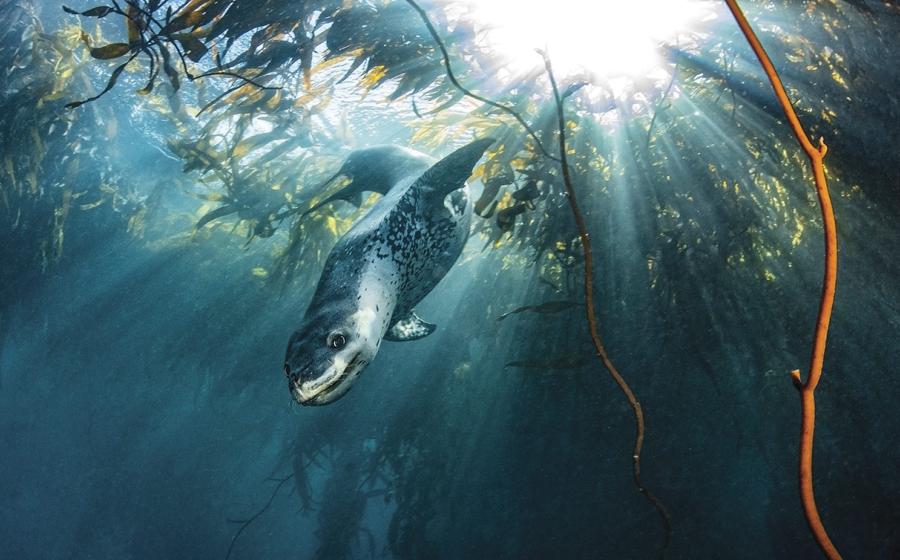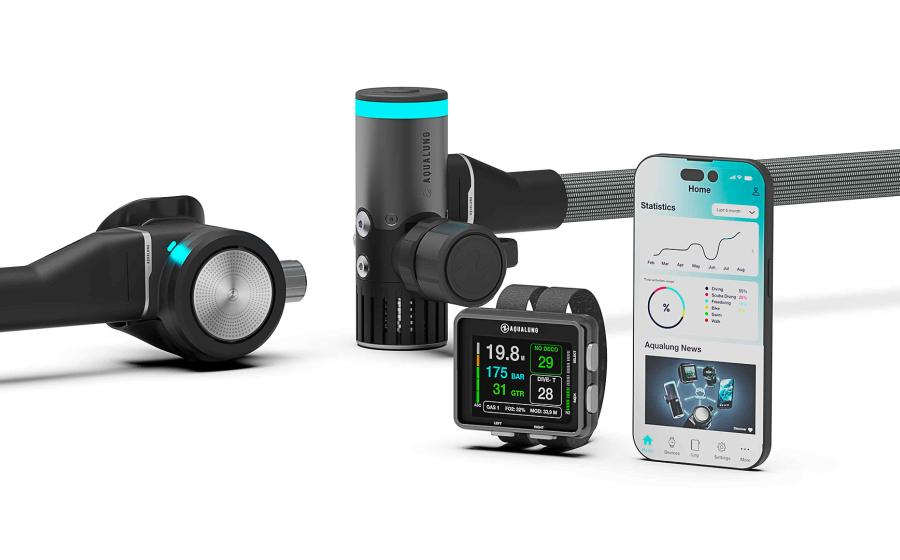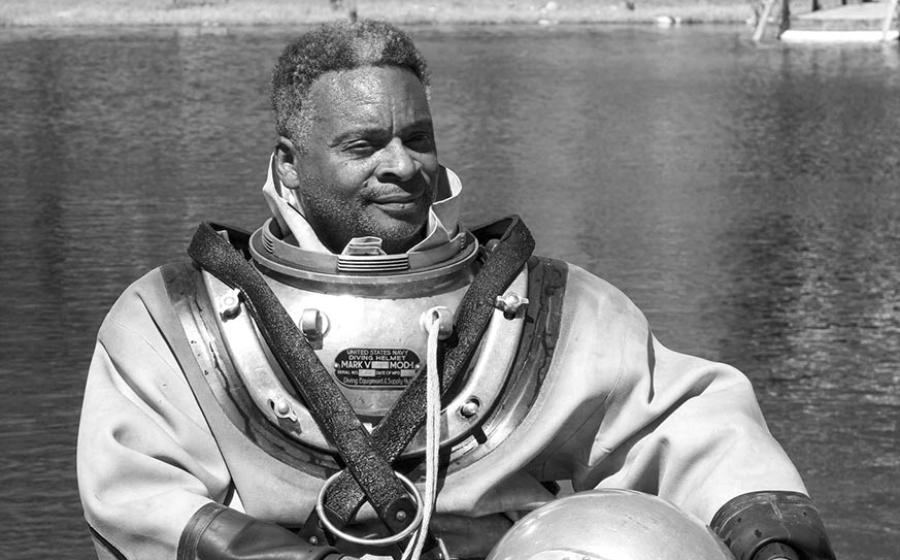The Art of Breathing Underwater
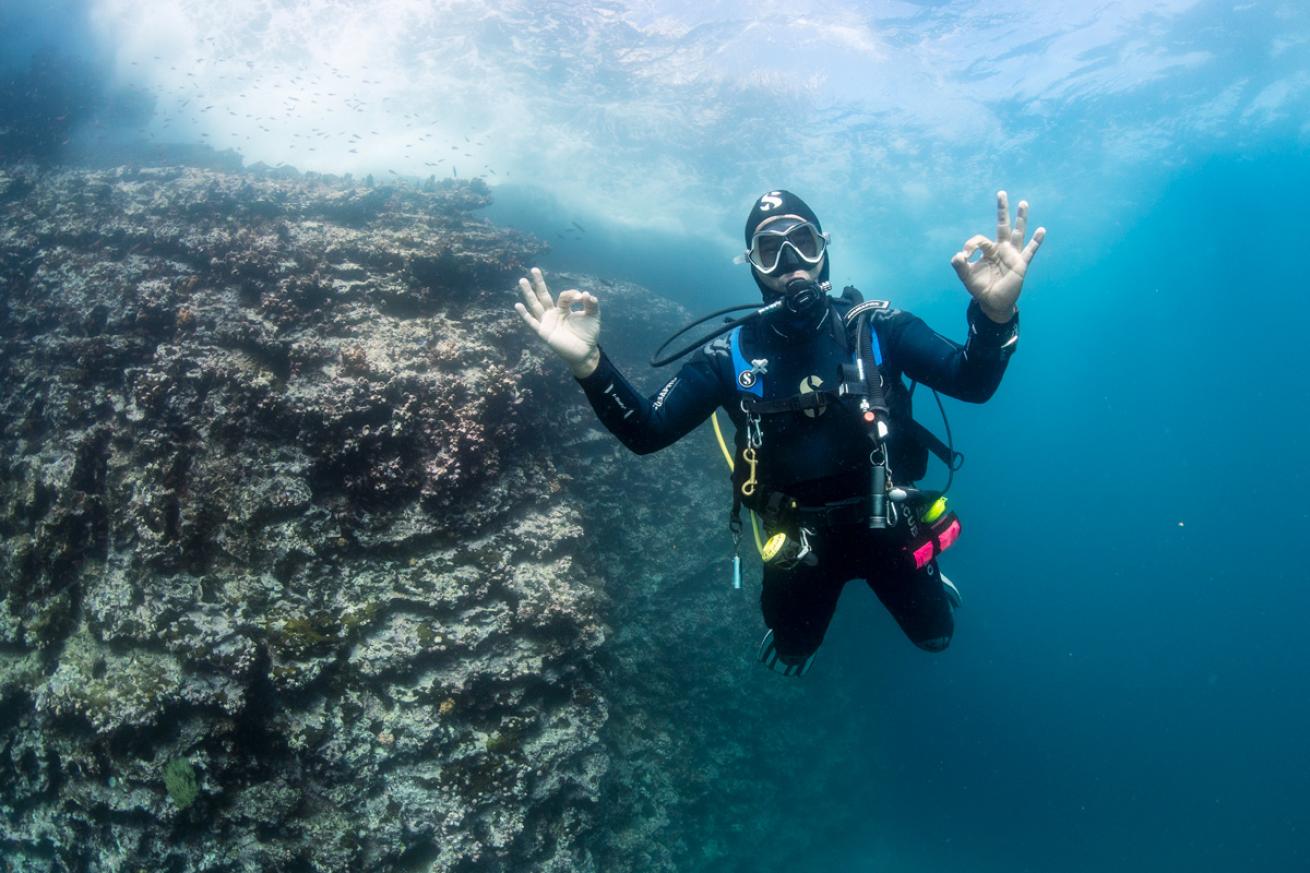
Annie CrawleyA zen diver hovers in the Galapagos. A weight check in the water will help ensure properly weighting, which impacts breathing, body position and the ability to maintain neutral buoyancy.
Diving is a psychological sport that is connected to the breath in every way. It requires you to breathe slowly and continually in and out without a pause. Practice this type of breathing with me as you read along.
Create an evenness of the inhale and exhale while developing a slow rhythm. If you are breathing through your nose, change to your mouth. Block off the soft pallet in the back of your throat to mimic the technique used for scuba diving.
Underwater, breathing too deeply will cause your chest to expand, displacing the water around you and causing your body to rise and fall.
Although this technique can be useful in some situations when diving, it is not the best way to breathe for sustained periods.
Try breathing slowly into your diaphragm without causing your chest to expand. This slow, continuous breath is the key to tapping into your restorative parasympathetic nervous system, which creates a calm and peaceful state.
If you breathe too quickly, you will move quickly and not think clearly. Fast breathing triggers changes in your entire body because the sympathetic nervous system kicks in, which prepares your body for a fight-or-flight response.
Your diving will change for the better when you become aware of your breath. If you focus on slow, intentional breathing and avoid sucking your air, you will be able to respond better to any minor or major stressor you may experience on a dive.
Choose The Right Reg
Invest in a great regulator that delivers air easily and fits comfortably in your mouth. Regulators take the high-pressure air from your tank and deliver it to you at a pressure equal to the surrounding water. Although regulators cost more than your mask and snorkel, it is worth investing in your personal breathing apparatus. Once you know scuba diving is your sport, invest in a great regulator to help you know what to expect from your personal equipment on every single dive.
Related Reading: This is the Best Dive Gear for 2023
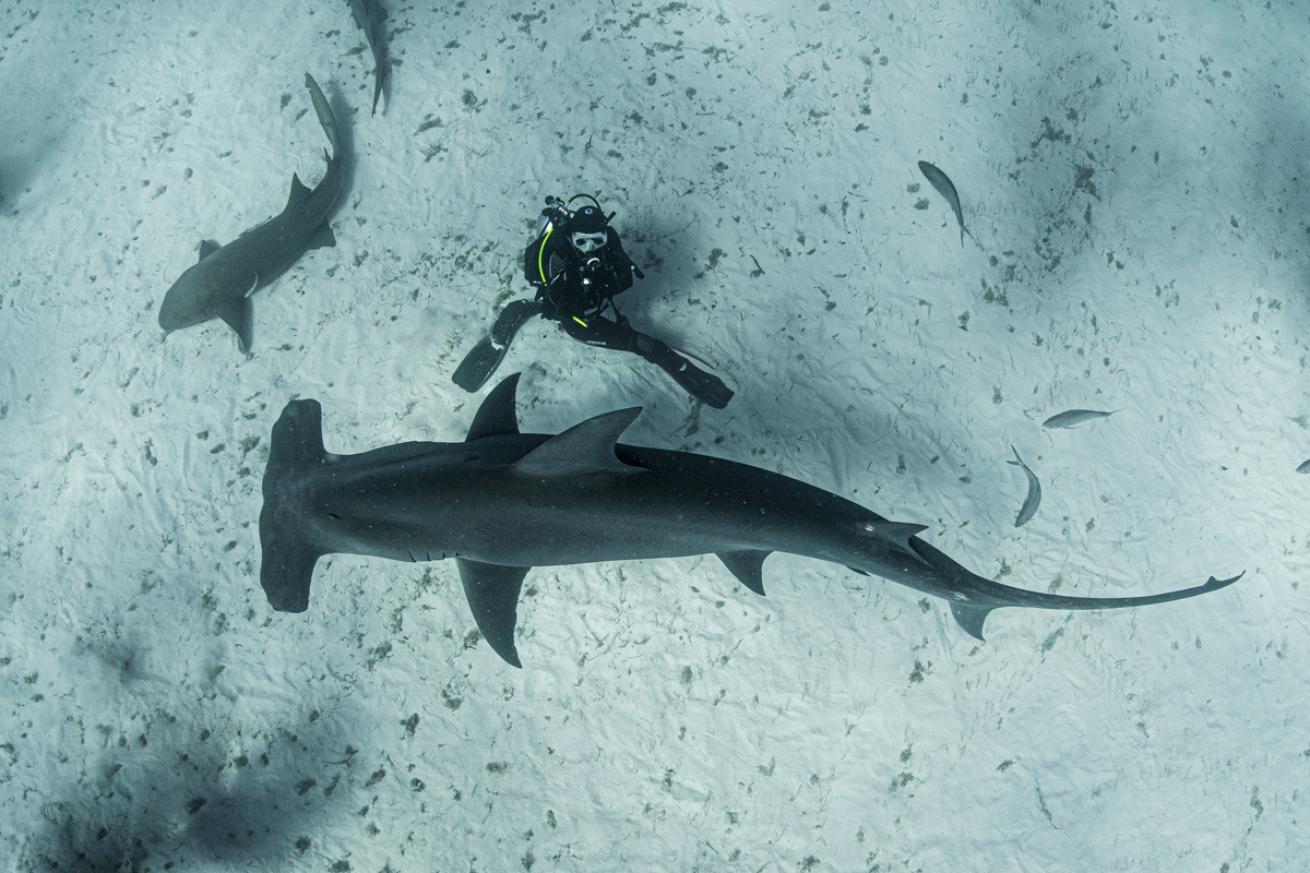
Annie CrawleyKey to the art of breathing is slow, continuous breaths, especially when trying something new, like diving with great hammerheads in the Bahamas (pictured here).
Recognize Stressors
Stressors can vary depending on training and experience. Improper weighting, a flooded mask or improperly fitted equipment are stressors that all divers can learn to recognize and respond to.
Review hand signals and dive idiosyncrasies, such as slow equalization, with your buddy before the dive. Cold water, new equipment, deep dives, current, surge or a camera can stress even the best diver. Developing a rapport with your buddy before getting in the water helps you become a mindful diver.
Follow best diving practices. At the surface, always keep a snorkel or regulator in your mouth to protect your airway. Do a thorough predive buddy check to catch potential issues. Recognizing common mask issues and addressing them throughout your dive helps prevent underwater stress.
If your mask doesn’t fit your face properly it will leak. Water in the mask can lead to ear congestion and equalization issues. If a diver cannot clear their mask at depth, it can also lead to perceptual narrowing and even panic.
Clearing a mask is one of the fundamental skills a diver must feel comfortable using throughout a dive. Many things can cause a small amount of water to enter the mask. If you smile, laugh or have a mustache, your mask may leak. If your mask rides up on your nose or falls over your lip, it will leak.
Pay attention to your mask and your buddy’s mask throughout the dive. If you observe water in your buddy’s mask, stop and have them clear and adjust the strap if necessary.
Related Reading: ASK DAN: How Can I Minimize My Decompression Stress?
Find Your Flow
Create checklists and a system to follow before every dive. Check your gear before you don your exposure protection so you can fix any issues that arise without becoming uncomfortably hot or cold depending on location.
Familiarize yourself with your buddy’s kit. Create a dive plan and discuss potential changes to the environment that can impact your dive, such as a strong current or bad visibility.
Discuss air consumption, lost-buddy procedures and underwater communication, including hand signals for “stop,” “think” and “breathe slowly,” to ensure your communication is consistent.
Remember the golden rule of scuba diving is to breathe slowly and continuously throughout your dive. This gives you the ability to problem solve while remaining calm in every situation. Debrief after each dive. Remember it’s OK to abort or cancel a dive if you feel uncomfortable.
Related Reading: 5 Diving Tips for Saving Air
PRO TIP
Turn fear into focus. If you feel anxious, talk to your buddy. Acknowledge and list your fears. Work with a dive professional and create a dynamic risk analysis of everything you might have questions about before diving. Gain skills through continuing education to ensure you are competent and capable to problem solve while diving. Knowing your equipment and capabilities helps you dive into every challenge with confidence.

